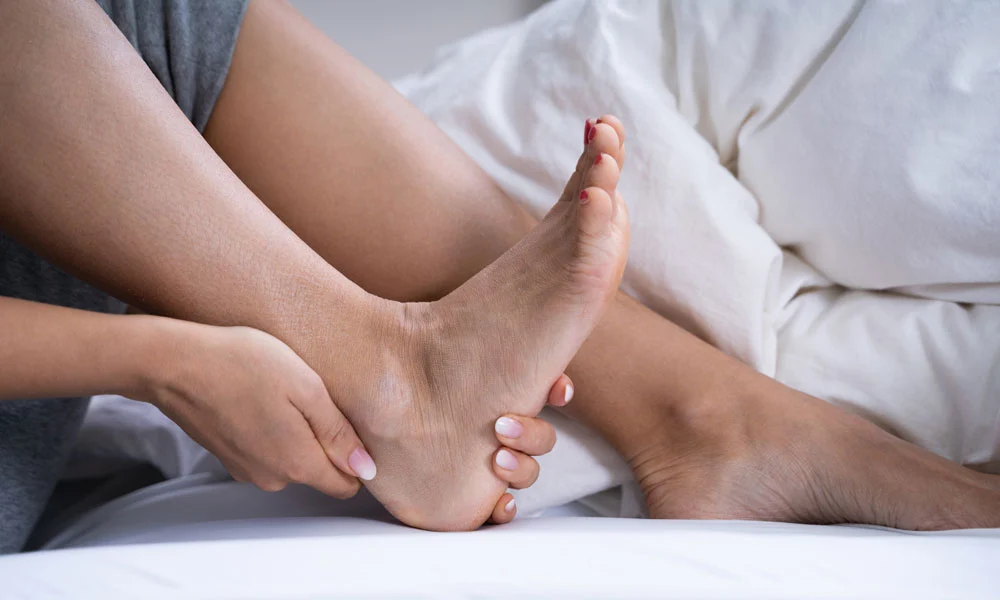
Image Source: Google
Heel pain can be a debilitating condition that affects your ability to walk, stand, and go about your daily activities. Whether it's caused by plantar fasciitis, Achilles tendonitis, heel spurs, or other conditions, finding the right treatment is essential to alleviate the discomfort and get back on your feet.
In this comprehensive guide, we'll explore the best treatment methods for healing heel pain so you can step lightly once again. If you are looking for the best pain treatment then, you can navigate to this site.
The Importance of Proper Footwear
Choosing the Right Shoes
- Opt for shoes with good arch support to reduce strain on the heels.
- Look for cushioning in the heel area to absorb shock and provide comfort.
- Avoid high heels and flat shoes that offer little to no support.
- Consider orthotic inserts or custom-made shoes for added support and alignment.
Replacing Worn-Out Shoes
- Inspect your shoes regularly for signs of wear and tear, such as worn-out soles or flattened cushioning.
- Replace your shoes every 300-500 miles of walking or every 6 months for optimal support.
- Invest in quality footwear that prioritizes support and comfort over style.
- Rotate between different pairs of shoes to prevent excessive wear on one pair.
Home Remedies and Self-Care
Rest and Ice Therapy
- Give your heels a break by avoiding activities that exacerbate the pain.
- Apply ice packs to the affected area for 15-20 minutes a few times a day to reduce inflammation.
- Elevate your feet while resting to promote circulation and reduce swelling.
- Avoid high-impact activities that put strain on the heels, such as running or jumping.
Stretching and Strengthening Exercises
- Perform calf stretches to improve flexibility and reduce tension in the Achilles tendon.
- Do plantar fascia stretches to alleviate tightness and pain in the arch of the foot.
- Try toe curls and heel raises to strengthen the muscles supporting the heels.
- Incorporate foot exercises like picking up marbles with your toes to improve strength and dexterity.
Professional Treatments
Physical Therapy
- Consult a physical therapist for personalized exercises and treatments to address heel pain.
- Receive hands-on therapy, such as massage and stretching, to improve flexibility and reduce discomfort.
- Learn proper body mechanics and posture to prevent future heel problems.
- Get recommendations for orthotic devices or braces to provide additional support and alignment.
Medical Interventions
- Consider corticosteroid injections for severe pain and inflammation that doesn't respond to conservative treatments.
- Explore shockwave therapy to stimulate healing and reduce pain in the heel area.
- Discuss surgical options with a podiatrist as a last resort for chronic heel conditions that don't improve with other treatments.
- Follow post-operative care guidelines to ensure a successful recovery and long-term relief.
Prevention and Long-Term Management
Maintaining Healthy Habits
- Avoid overexertion and give your feet time to rest and recover after physical activities.
- Stay at a healthy weight to reduce pressure on the heels and prevent strain on the foot muscles.
- Stay hydrated and eat a balanced diet to support overall foot health and reduce inflammation.
- Wear supportive shoes at all times, even when at home, to protect your feet from injury and discomfort.
Regular Check-Ups and Monitoring
- Visit a podiatrist for regular check-ups and screenings to monitor the health of your feet.
- Seek prompt medical attention if you experience persistent or worsening heel pain despite treatment.
- Stay informed about the latest developments in heel pain treatments and adjust your approach as needed.
- Listen to your body and adjust your activities and footwear to prevent recurring heel pain.
Conclusion
Heel pain can significantly impact your quality of life, but with the right treatment methods and self-care practices, you can find relief and improve your mobility. From wearing supportive shoes to performing stretching exercises and seeking professional treatments when needed, there are various ways to address heel pain effectively.
